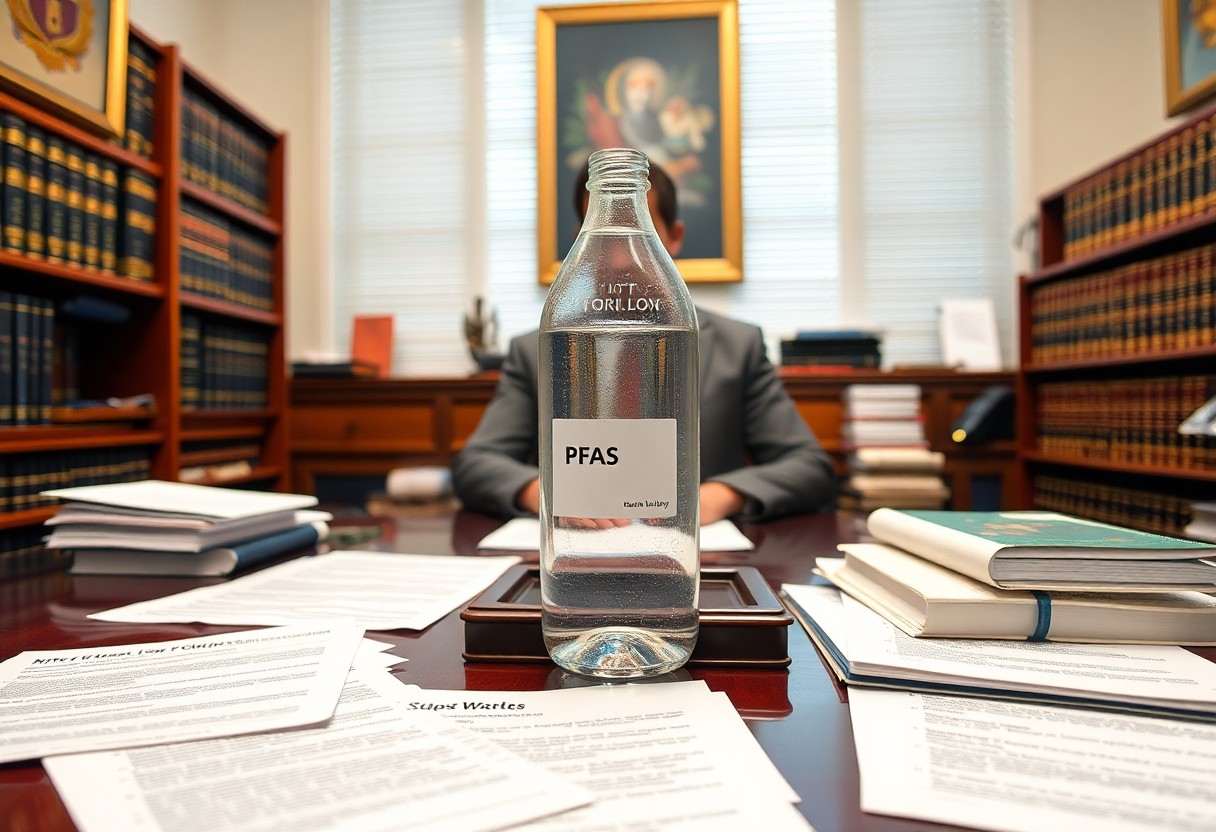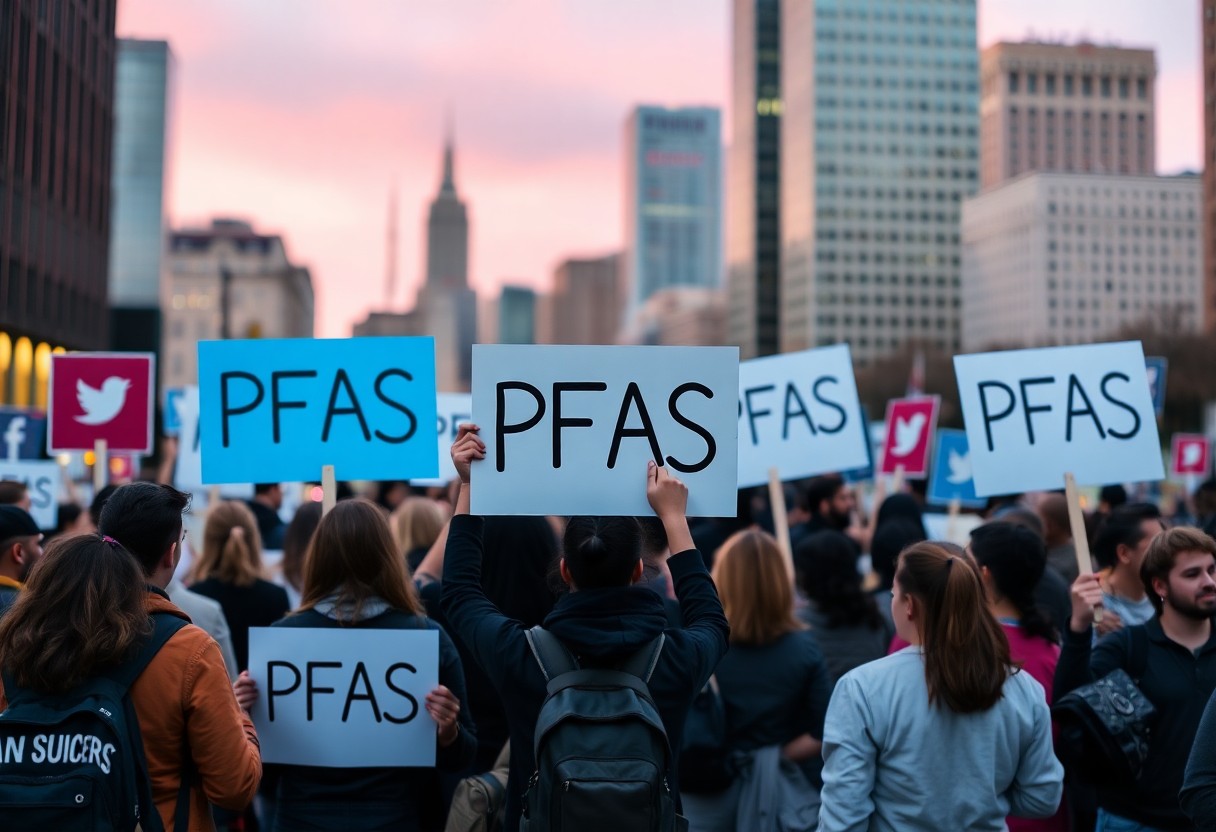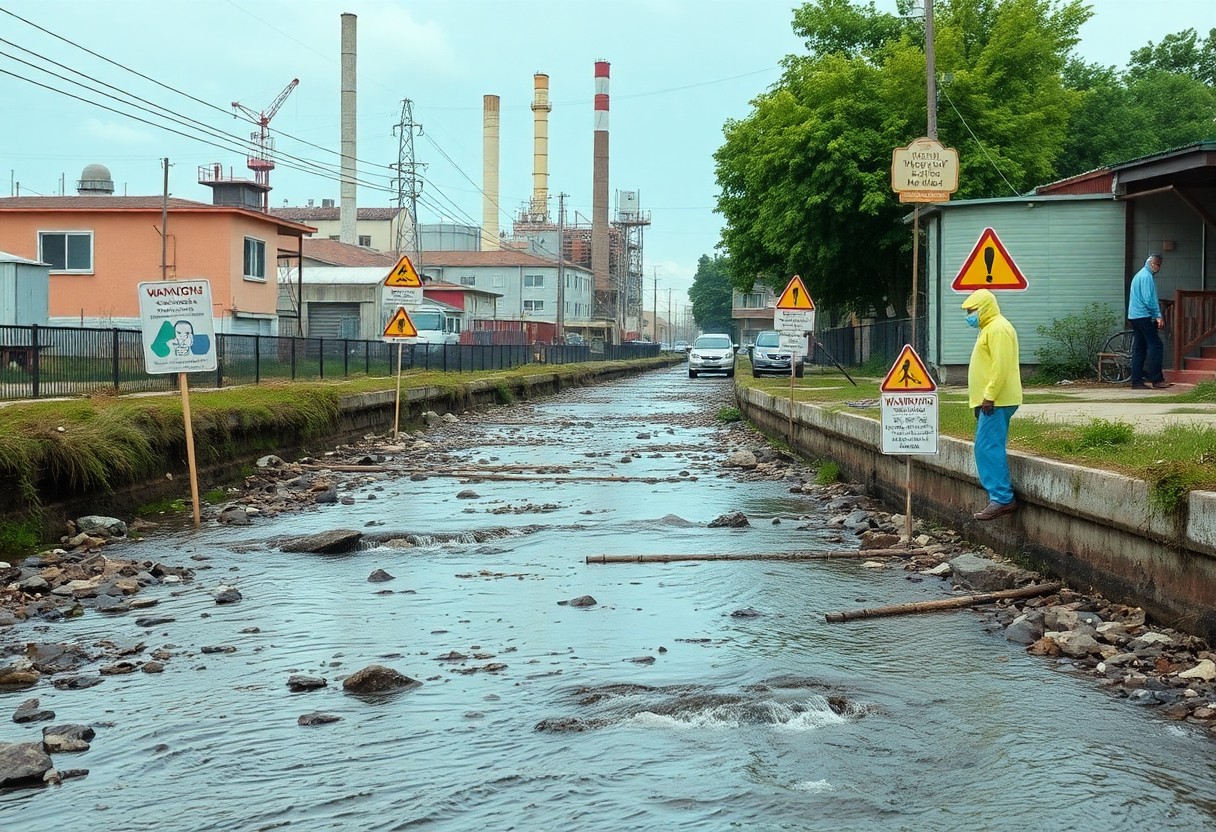Just as the public’s awareness of PFAS (per- and polyfluoroalkyl substances) has grown, so too has the legal landscape surrounding these hazardous chemicals. You may be wondering how various lawsuits are influencing new regulations and policies aimed at improving safety and environmental health. In this post, we’ll explore the dynamics between legal actions and regulatory changes, highlighting key developments and what they mean for you and your community. Understanding these connections can empower you to advocate for safer practices and policies.
Understanding PFAS
A significant topic gaining attention in recent years is PFAS, or per- and polyfluoroalkyl substances. These man-made chemicals are used for their water- and grease-resistant properties, often found in non-stick cookware, water-repellent fabrics, and food packaging. Their pervasive presence in consumer products raises important questions about their long-term impact on both human health and the environment.
Definition and Sources
Any substances identified as PFAS consist of a large group of synthetic chemicals used commercially since the 1940s. They are primarily found in products such as firefighting foam, food packaging, and various household items. Their ability to repel oil and water makes them popular, but it also leads to environmental persistence and accumulation in living organisms.
Health and Environmental Impacts
The impact of PFAS on health and the environment has become a serious concern. Studies link these substances to various health issues, including immune system suppression and increased cancer risk. Your exposure can occur through contaminated water, food, and consumer products. Additionally, PFAS pollution threatens ecosystems, as these chemicals do not break down, leading to their accumulation in soil and water sources.
Plus, the ramifications of PFAS contamination are extensive. They pose significant risks, such as long-lasting health effects and potentially costly cleanup operations. The presence of PFAS in drinking water has raised alarms, prompting the need for regulatory action and stricter limits on acceptable levels. As awareness of the adverse effects increases, you can advocate for better policies and practices to safeguard your health and the environment.
Current PFAS Regulations
Assuming you are concerned about the implications of PFAS, it’s vital to understand the existing regulations that govern these substances. Current policies at both the federal and state levels vary significantly, with some states implementing stricter rules than federal guidelines. These evolving regulations reflect growing awareness of the potential health risks associated with PFAS exposure, driving the need for comprehensive regulatory frameworks.
State and Federal Regulations
PFAS regulations are uneven across the United States, with federal agencies like the EPA working to establish more consistent standards. Some states have already taken the initiative by setting their own limits for PFAS levels in drinking water and issuing guidance for monitoring and remediation. This patchwork approach highlights the urgent need for a cohesive national strategy to effectively address the challenges posed by PFAS contamination.
International Approaches
Any discussion of PFAS regulations would be incomplete without considering international approaches. Countries like Sweden and Denmark have already adopted stronger restrictions on PFAS, aiming to phase out these substances in consumer products. This proactive stance reflects a global recognition of the need to protect public health and the environment. The European Union is also moving towards stricter regulations, influencing global markets and prompting manufacturers to seek alternatives to these hazardous chemicals.
Due to the increasing awareness of PFAS risks, countries around the world are taking decisive action to manage these substances. Many nations are working towards a comprehensive ban or strict regulation of up to 1,000 different PFAS compounds. Additionally, efforts are underway to promote sustainable solutions and encourage industries to adopt safer alternatives, thus reducing reliance on PFAS. By aligning global policies, countries aim to create an effective collective response to this pressing environmental issue.
The Role of Litigation in Shaping Policy
Some studies suggest that when it comes to Environmental Protection, litigation serves as a powerful tool for advocating change. Through lawsuits, individuals and organizations can highlight the dangers of certain chemicals like PFAS, compelling regulators and policymakers to address these issues more rigorously. Your awareness of these legal battles can be instrumental in driving reforms, as they often highlight the shortcomings in existing regulations and promote more stringent guidelines.
Landmark Lawsuits
An example of impactful litigation can be seen in landmark lawsuits against major chemical manufacturers. These cases not only reveal the devastating effects of PFAS contamination but also lead to significant settlements that incentivize corporations to adopt safer practices. As you follow these cases, consider how they influence public perception and governmental actions regarding toxic substances.
Legal Precedents and Impacts
Along with landmark cases, the establishment of legal precedents offers a roadmap for future litigation regarding PFAS. These precedents can strengthen your understanding of environmental law, as they often dictate how courts interpret existing regulations and enforce accountability for contamination. The outcomes shape not only immediate responses but also long-term approaches to policy reform.
Litigation plays a pivotal role in shaping environmental policy, particularly concerning PFAS. When landmark lawsuits are filed, they often expose regulatory inadequacies and push for stronger legal frameworks. You might find it enlightening that successful cases can lead to increased compensation for affected communities and drive companies to adopt more sustainable practices. Additionally, legal precedents established in these cases can influence how future legislation is crafted. This collective response can often result in more comprehensive regulations aimed at protecting public health and the environment, making your engagement with these issues vital for ongoing reform.
Future Directions for PFAS Regulations
Not only are you likely to see an increase in regulations concerning PFAS, but the landscape is also expected to evolve swiftly as public awareness grows and science progresses. Upcoming policies may emphasize stricter limits on allowable concentrations and mandate comprehensive testing from manufacturers. With mounting pressure from advocacy groups and ongoing lawsuits, you can anticipate more comprehensive approaches to managing PFAS risks and protecting your health.
Proposed Legislative Changes
Regulations surrounding PFAS are set to undergo significant revisions as lawmakers propose new measures that address public health concerns. You may expect mandatory disclosure requirements for manufacturers and restrictions on the sale of products containing these hazardous substances. These changes aim to hold industries accountable and safeguard you from the detrimental effects of PFAS exposure.
Advocacy and Public Awareness
To protect your community from the dangers of PFAS, advocacy efforts are ramping up, raising awareness about these hazardous chemicals. Public campaigns and community organizations are playing a vital role in informing you about the potential health risks and promoting action towards more stringent regulations.
With the increasing public awareness campaign around PFAS, you can see a movement gaining momentum to drive policy changes. Advocacy groups are mobilizing to educate you on the risks associated with these substances, aiming to create a collective voice that demands transparency from industries and governments. Your engagement and awareness can help shape local and national agendas, emphasizing the need for legislative action to ensure safer environments and protect public health.
Challenges and Controversies
To navigate the emerging landscape of PFAS regulations, you must understand the various challenges and controversies involved. Lawmakers, advocacy groups, and industry stakeholders often clash over the implications and effectiveness of proposed regulations, leading to a complex dialogue that shapes public policy and impacts health outcomes.
Industry Pushback
Against the backdrop of increasing regulations, many industries are voicing strong objections to proposed PFAS laws. They argue that stringent restrictions may hinder economic growth and innovation while maintaining that they are already taking measures to mitigate PFAS risks. This pushback often results in lobbying efforts aimed at diluting proposed policies.
Scientific Uncertainties
Among the most significant challenges in PFAS regulation are the scientific uncertainties surrounding their health impacts. These uncertainties create a divided opinion on how to best handle potential risks associated with PFAS exposure.
In addition, as emerging research continues to unveil the potential health risks of PFAS, you may find that the lack of consensus among scientists complicates regulatory decisions. Some studies suggest links to serious health conditions, while others are less conclusive, fostering debate about the appropriate thresholds for safe exposure. This ambiguity can hinder policymakers’ ability to enact effective legislation, as they may need to balance public health concerns with economic implications posed by industrial practices. Understanding these nuances is vital for staying informed on the evolving PFAS situation.

Case Studies of Successful Regulatory Changes
Once again, we see how effective lawsuits can lead to significant regulatory changes surrounding PFAS chemicals. The following case studies exemplify this trend:
- 1. California’s Water Board: Implementation of maximum contaminant levels for PFAS in drinking water, resulting in a 70% reduction in community exposure.
- 2. Michigan Settlement: A $69 million settlement led to stricter industrial discharge regulations, limiting PFAS pollution in local waterways.
- 3. New York’s Action Plan: Enacted regulations requiring public water systems to monitor PFAS levels, improving public health awareness across 1,200 municipalities.
Notable Examples
Successful initiatives from these case studies show how litigation can catalyze policy reforms, ultimately benefiting public health and the environment.
Lessons Learned
For you to effectively push for change, understanding the outcomes of past regulatory victories is significant. These cases highlight the power of legal action in driving reform.
But navigating regulatory processes can be complex, requiring collaboration between regulators and communities. Your advocacy can be more effective when based on solid data and community engagement. This means emphasizing the need for transparency and continuous monitoring of PFAS levels. Moreover, the shared experiences from these cases remind you to stay persistent, as change often takes time, yet collective efforts can lead to transformative outcomes that protect public health and the environment.
Conclusion
Hence, understanding how new PFAS regulations are shaped by lawsuits empowers you to navigate the complexities surrounding these harmful substances. As you engage with policy discussions or consider the impact on your community, your awareness of the interplay between legal actions and regulatory changes can inform your decisions. By staying informed, you contribute to a proactive approach that advocates for safer environments and better public health outcomes related to PFAS exposure.



















